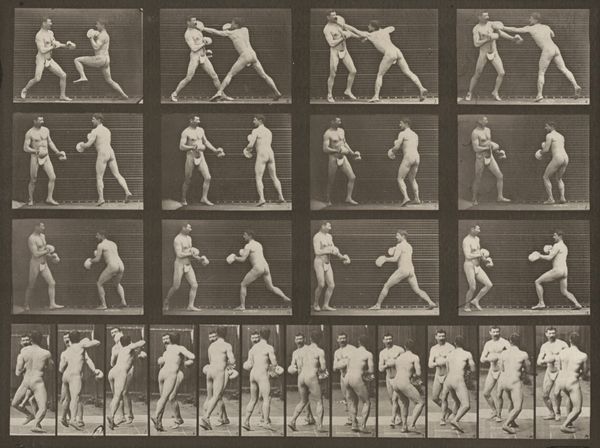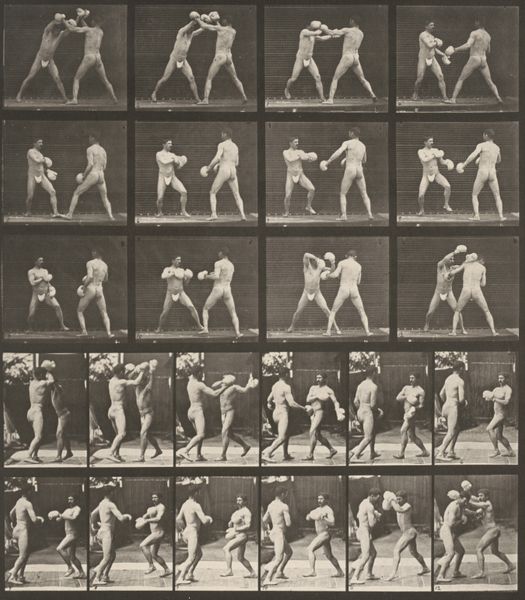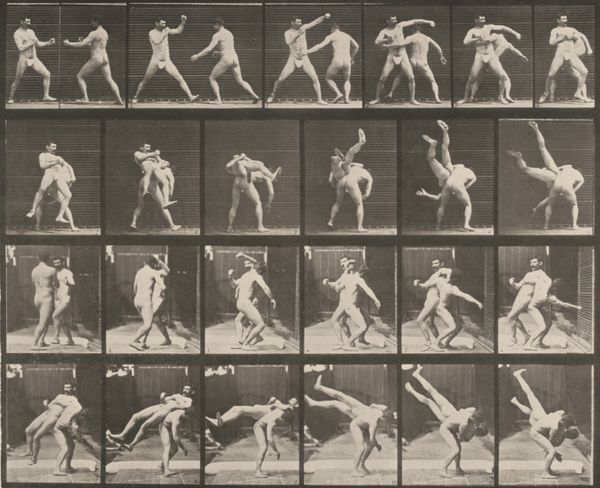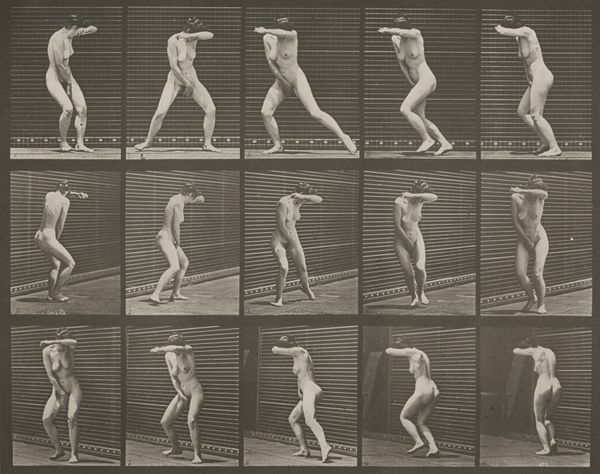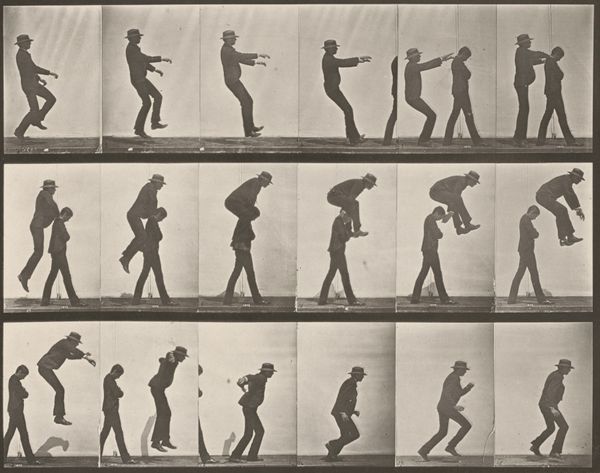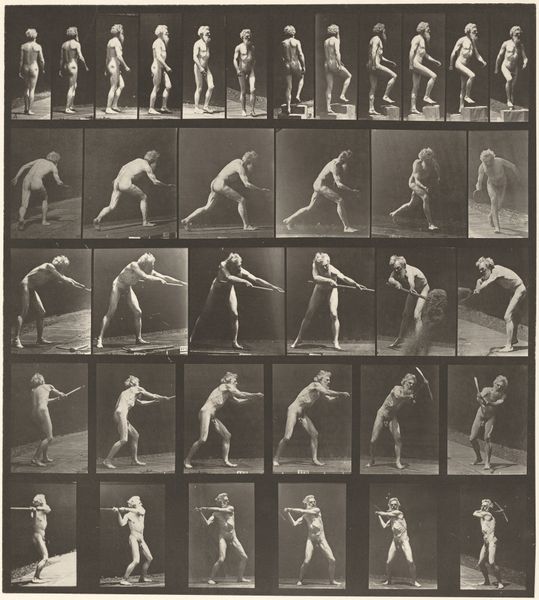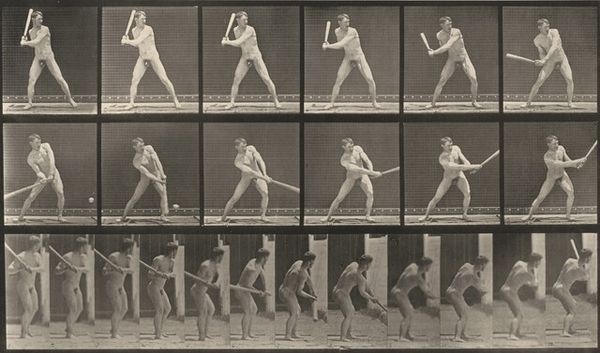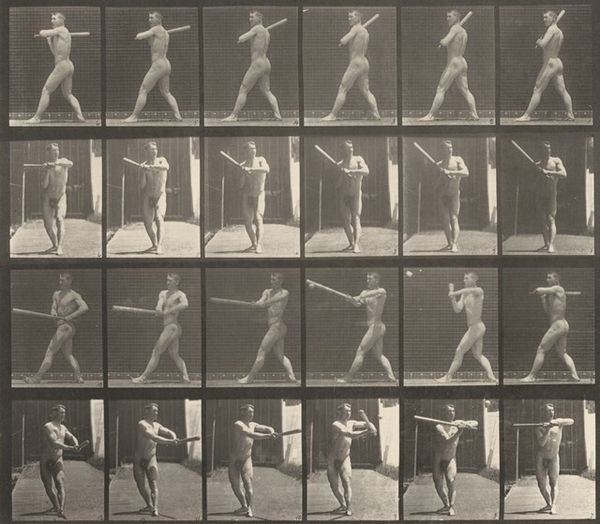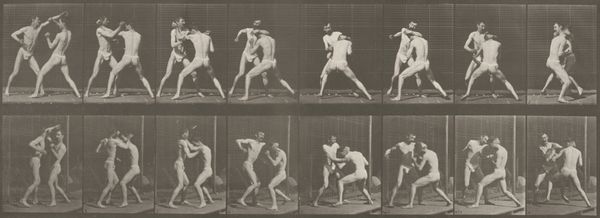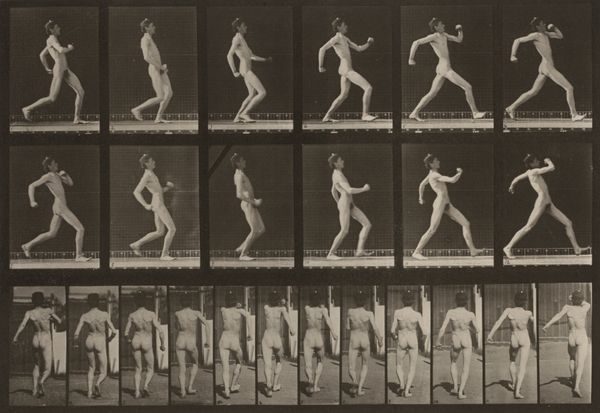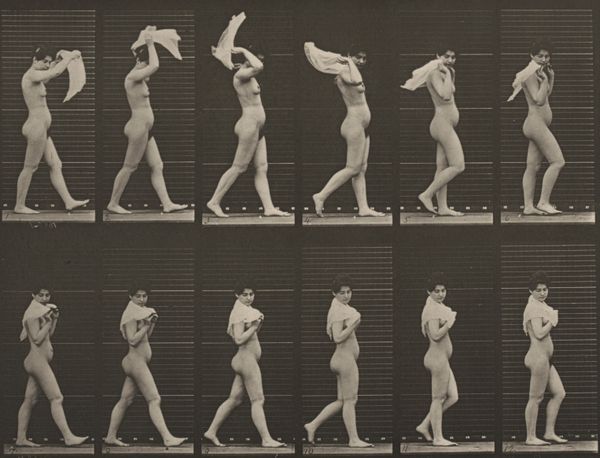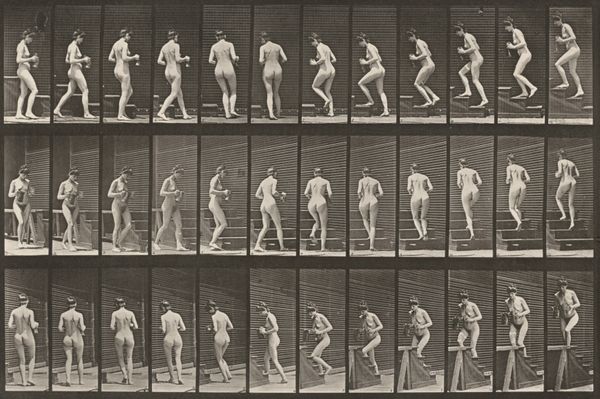
print, photography, gelatin-silver-print
#
action-painting
#
portrait
#
narrative-art
# print
#
figuration
#
photography
#
gelatin-silver-print
#
history-painting
#
erotic-art
#
realism
Dimensions: image: 22.75 × 32.3 cm (8 15/16 × 12 11/16 in.) sheet: 48.4 × 61.3 cm (19 1/16 × 24 1/8 in.)
Copyright: National Gallery of Art: CC0 1.0
Curator: Editor: Looking at Eadweard Muybridge's "Plate Number 336. Boxing, open hand" from 1887, rendered as a gelatin silver print, it strikes me how modern it feels. The grid of images almost resembles a flip book, dissecting movement. What are your initial thoughts on this photograph? Curator: The dissection of movement you mention is precisely what interests me. Forget about the artifice of “art” for a moment. Consider the labor: the posing, the setting up of the camera, the darkroom processes to produce these prints. These bodies are materials being manipulated in service of scientific inquiry, a form of work, no different than working in a factory. What is being consumed and who is benefiting? Editor: That's fascinating! So, it's less about the aesthetic quality of the images themselves, and more about the act of creating them and the broader social context in which they were made? I hadn’t considered that. It challenges this notion of photography solely as capturing “reality,” if that makes sense. Curator: Precisely. The "reality" here is a constructed one. The photographic process, from the sensitivity of the gelatin silver to light to the manual labor involved, shapes our perception of these actions. What is the value, and how does the means of its production create that value? Consider, how did the printing press, an earlier form of mass image production, influence societal values? Editor: I guess it encourages you to question the choices and manipulations embedded in even what seems like a straightforward visual record. What did Muybridge hope to achieve showing the motion? Curator: Indeed, we can think of it as a system of visual consumption driven by Muybridge's ambition. Did he commodify their labor to further his career, publishing findings, and influencing our understanding of motion? Also, what scientific questions are they trying to solve here by showing "Boxing"? What "real world" issue is the production of the photo attempting to answer? Editor: This reframing is incredibly helpful. I’ll never look at a Muybridge photograph the same way again! Thanks. Curator: I think this lens allows us to consider more than what we perceive on the surface and rather what is physically embedded in art and photography practices, which offers an excellent opportunity to learn about society.
Comments
No comments
Be the first to comment and join the conversation on the ultimate creative platform.
